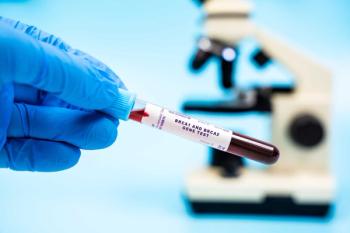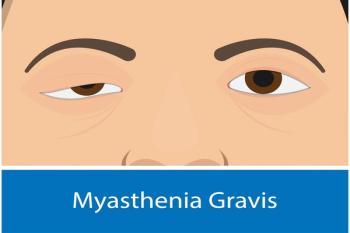
Asking the Right Questions Can Help Identify Dry Eye Disease in Patients
Jessilin Quint of Smart Eye Care and Rebecca Petris of Dry Eye Foundation talk about how health care and eye care professionals can educate and identify patients with dry eye.
Jessilin Quint, OD, MBA, FAAO, from Smart Eye Care and Rebecca Petris from the Dry Eye Foundation spoke about how both eye care professionals and health care professionals can help to identify and treat
Transcript
How can we educate patients about dry eye disease in the future?
Petris: There are some really great screening tools, I think that are helpful. Just quick scorecards. And then just simple conversations about the symptoms.
Quint: Yeah, I was gonna say just listening to a patient. If [they] comment anything on their eyes, or sometimes just asking 1 simple question, like "how often, throughout the day, do you think about your eyes?" Right? And if the answer to that is more than ever then that starts a conversation of well you might have this, let's get you set up with an eye care provider to talk about it further.
Petris: I think there's also an important question, which is, "are you using any eyedrops?" Because eye drops are used as consumer items, even more so potentially, than as a medical treatment—the over-the-counter stuff. And that brings up safety issues, as we know, but also it'll reveal what may be going on with someone. They may not be reporting any symptoms or going in for an exam, specifically because of symptoms, but they might be dousing their eyes with inappropriate eye drops every day. So it's a way to pick up on what's going on with their eyes.
How can health care professionals help identify and treat dry eye disease?
Quint: Yeah, so different health care professionals, regardless of what specialty or eye care professionals, really just as we had talked about, really just starting that conversation and asking: "do you use drops? Do you have any of these dry eye symptoms: burning, watering, redness, itching, fluctuating vision?" And really from there that's kind of just step 1, right? And then again, it is kind of redirecting that patient to an eye care provider to really deep dive in and find out what tools, what treatment options, what therapy is really going to help them relieve their symptoms.
Petris: You know, it's great, you mentioned watering eyes, right? That is like the most counterintuitive dry eye symptom. That one maybe flies under the radar more than anything else. Of course, [it] doesn't make sense to them. My eyes are watering, how could they be dry?
Quint: Yeah and itching too. A lot of my patients think that itching, oh, it's just allergies. But a lot of times allergies and dry eye, the symptoms are very nonspecific and they overlap and sometimes, allergy itching isn't actually allergies, it could actually be dry eye.
And blurry vision. Sometimes people land in my chair, because they think that they need new glasses or new contact lenses because their vision has changed. And sometimes it's not really a prescription change. Sometimes it's actually their ocular surface just needs a little bit of improvement because dry eye, as simple as it may seem, we all know that it's not that simple, can really impact [patients]. It's not always comfort issues. Sometimes it is vision.
Petris: It's extraordinary, really what a range of experiences there are. You get people who are fairly severe and yet they have no vision involvement at all; spanking clean, 2020 vision. And others whose vision is just all over the place, fluctuating; they can't get a reliable prescription for their glasses.
Newsletter
Stay ahead of policy, cost, and value—subscribe to AJMC for expert insights at the intersection of clinical care and health economics.













































